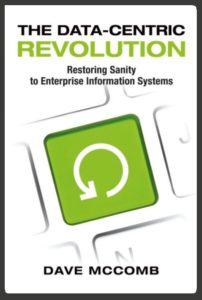In this column, I am making the case for Data Centric architectures for enterprises. There is a huge economic advantage to converting to the data-centric approach, but curiously few companies are making the transition. One reason may be the confusion of Data Centric with Data Driven, and the belief that you are already on the road to data centric nirvana, when in fact you are nowhere near it.
Data-Centric
Data-centric refers to an architecture where data is the primary and permanent asset, and applications come and go. In the data-centric architecture, the data model precedes the implementation of any given application and will be around and valid long after it is gone.
Many people may think this is what happens now or what should happen. But it very rarely happens this way. Businesses want functionality, and they purchase or build application systems. Each application system has its own data model, and its code is inextricably tied with this data model. It is extremely difficult to change the data model of an implemented application system, as there may be
Of course, this application is only one of hundreds or thousands of such systems in an enterprise. Each application on its own has hundreds to thousands of tables and tens of thousands of attributes. These applications are very partially and very unstably “interfaced” to one another through some middleware that periodically schleps data from one database to another.
The data centric approach turns all this on its head. There is a data model—a semantic data model (but more on that will be in a subsequent white paper)—and each bit of application functionality reads and writes through the shared model. If there is application functionality that calculates suggested reorder quantities for widgets, it will make its suggestion, and add it to the shared database, using the common core terms. Any other system can access the suggestions and know what they mean. If the reordering functionality goes away tomorrow, the suggestions will still be there.

